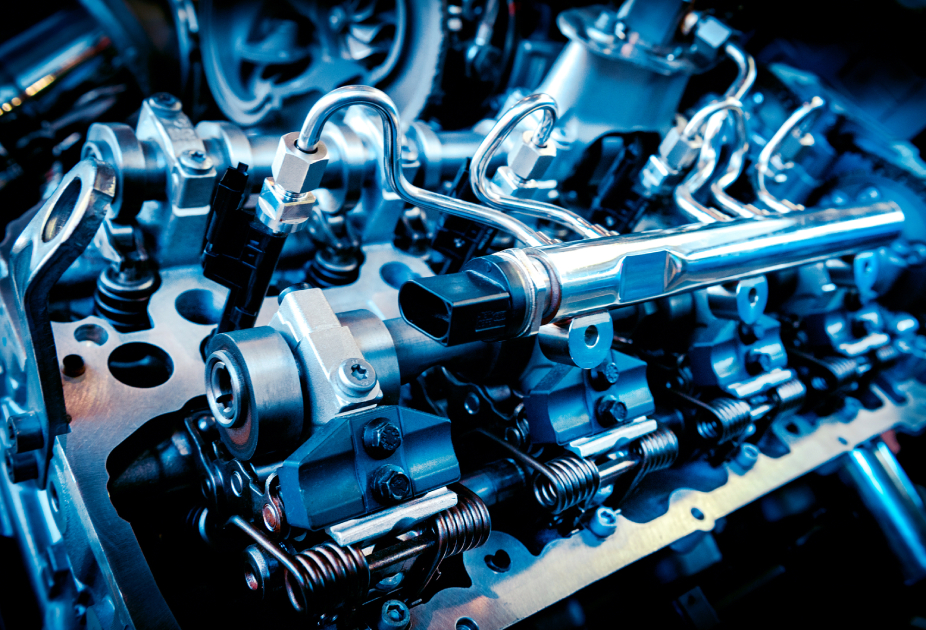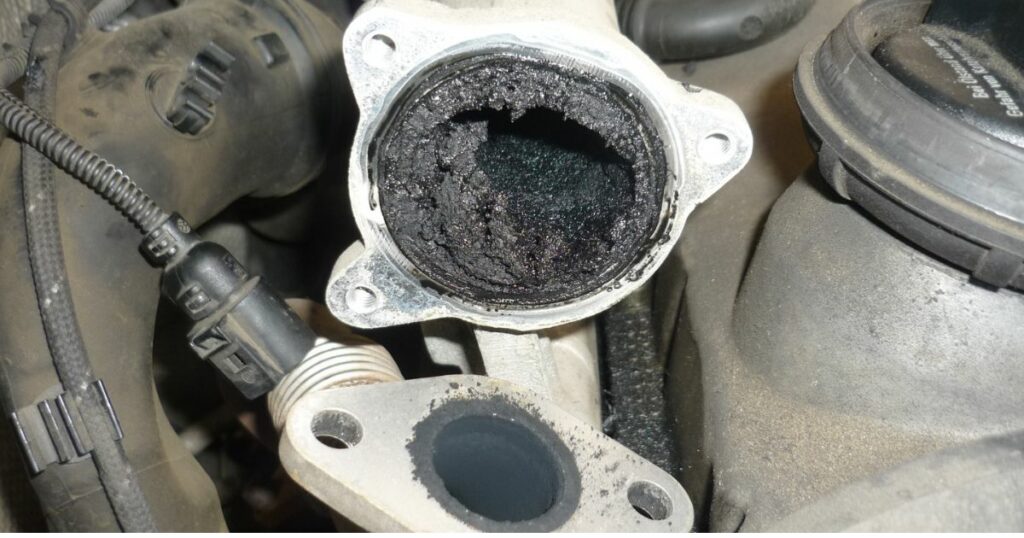
Ford launched the 6.7 Power Stroke diesel in 2011 with four valves per cylinder, and a GT32 SST single sequential turbocharger, getting disposed of the HEUI injectors in favor of a more contemporary typical rail injector architecture. This engine produced 390 horsepower and 735 lb-ft of torque.
Early Powerstroke 6.7 models should be avoided, especially those from 2011, 2012, 2013, and 2014. Metal rubbing on metal is caused by inadequate lubrication in the pumps of the 6.7 diesel engines. After then, fragments enter the engine and injection systems. Injectors, regulators, lines, and the fuel system can all be harmed by metal pollution.
How long has Ford been utilizing 6.7 Powerstroke engines?
The Ford 6.7 Powerstroke, sometimes called “The Scorpion,” is a turbodiesel engine. Ford has introduced its fourth generation of diesel engines, primarily used to power its super-duty vehicle portfolio. Ford’s leading diesel engine has been the 6.7 Powerstroke for over ten years.
But it’s crucial to remember that even though Ford has kept using the 6.7 Powerstroke in their super-duty trucks, there have been numerous iterations of this engine over the years. There are many 6.7 Powerstroke versions, some of which are noticeably better than others because this engine has undergone multiple revisions and improvements since it was initially revealed.
Generations of 6.7 Powerstroke Engine:
With every new version of the 6.7 Powerstroke diesel engine since its launch in 2011, Ford has worked tirelessly to boost its performance. While there are undoubtedly some slight design alterations after each year, the 6.7 Powerstroke generation saw the most incredible advancements.
Depending on the year your truck was manufactured, you may find three 6.7 Powerstroke engine versions in Ford vehicles.
- 1st generation 6.7 Powerstroke: 2011 – 2014
- 2nd generation 6.7 Powerstroke: 2015 – 2016
- 3rd generation 6.7 Powerstroke: 2017 – 2022+
The 6.7 Powerstroke years to avoid

The first-generation 6.7 Powerstroke years, which ran from 2011 to 2014, should be avoided. The injection pump failing, leaks occurring, and poor bearing quality are just a few of the issues that beset the first generation of 6.7 Powerstroke engines.
Other problems include broken exhaust valves, malfunctioning EGR coolers, troublesome EGT sensors, undersized turbochargers, and problematic EGT sensors. While some of these issues were resolved relatively early in the production process, others persisted throughout the entire first generation. Installing the second generation is something I advise.
What was the best 6.7 Powerstroke year?
Almost all 6.7 Powerstroke engines have numerous faults of varying severity. However, Ford has resolved most issues with the second-generation (2015-2017) and third-generation (2018-present) engines. The finest 6.7 Powerstroke year is the second generation, from 2015 to 2017.
Reasons to avoid 6.7 Powerstroke years
Ford did not produce their own V8 engines until they released the 6.7 Powerstroke engines in 2011. Issues have plagued the diesel-powered 6.7 engines since they were introduced in 2014. Although things are improving now, all I heard from truck owners for those years were various criticisms of the 6.7 Powerstroke.
The first generation 6.7 Powerstroke should not be used for the following reasons:
1. EGT Sensor fault
The previous 6.7 Powerstroke vehicles also had issues with the EGT sensor failing. The engine contains four EGT sensors. Hence there is a significant chance of failure. In actuality, Ford extended its warranty to include the EGT. The middle two sensors, the 12 and 13, are frequently problematic.
2. Failed Injection Pump
The first and the most common issue with all 6.7 engines before the 2020 generation is injection pump failure. These engines include a Bosch CP4.2 injection pump. Unfortunately, this CP4 injector has been known to malfunction in the 6.7L and 6.6L Duramax engines.
The breakdown can be attributed to various factors, including a lack of maintenance and ultra-low sulfur diesel that lacks enough lubrication. Whatever the source, it is known that these injector pumps spread cam erosion particles throughout the fuel system.
Over time, the entire fuel system, including the injector, regulators, and lines, deteriorates and, in some cases, is destroyed. Such damage is quite expensive; some repairs can run as much as $10,000.
3. EGR Cooler Blocked
Clogged ERG coolers were a common issue with all 6.7 Powerstroke engines from the start. This issue with the engine became evident due to an upgrade that Ford made to the motor to fix concerns they encountered with other engine types.

Ford resolved many previous engine types’ problems, although the design generated other complications. Many drivers reported that their Ford engines began overheating with no apparent cause. The ERG cooler was blocked due to overheating and the engine code P0401.
Over time, the entire fuel system, including the injector, regulators, and lines, deteriorates and, in some cases, is destroyed. Such damage is quite expensive; some repairs can run as much as $10,000.
4. Damaged Exhaust Valves
With the first model, 6.7 Powerstroke, several reports of damaged exhaust valves were reported. This condition is particularly bothersome since it can lead to more severe concerns if left unchecked.
Ford chose a substandard material for the engine’s exhaust valves in the early versions of the 6.7 Powerstroke, leading them to break quickly. Fixing this may already be time-consuming for many car owners, as it results from a design defect.
When an exhaust valve fails, however, it is common for the component to damage the glow plugs. Initially, determining the source of the problems was difficult because all reasoning led to the glow plugs failing separately.
The issue was considerably simpler to fix after discovering that the exhaust valves were directly responsible for the glow plugs breaking. That said, the 2011 6.7 Powerstroke engines have frequently broken exhaust valves. Ford updated the 2012 engine to stop the exhaust valves from cracking after discovering the issue during the first year the engine was made available.
5. Leaking Radiator Coolant
Radiator coolant leaks are one issue that has been present for 6.7 diesel years. The central radiator on the 6.7 is the primary troublesome of the two radiators. As a result, this engine frequently has coolant leaks at the radiator.
Meanwhile, engine iterations have less frequently experienced this issue, although the early ones were infamous for having poor radiators. Therefore, replacing the radiator with an aftermarket model is a standard solution.
6. Turbocharger Issues
The 6.7L engine’s 2011–2014 iteration was pretty potent, with 390HP and 735 lb-ft of torque. Ford decided instead to use a smaller turbo for the machine. The turbo rapidly broke down as a result. Its use of ceramic bearings did not help the situation either.
The turbo on this older engine was often relatively tiny, measuring around 52mm. The 6.0L Powerstroke turbos, by contrast, measure about 57mm.
The turbos on these engines won’t survive very long due to their size. Thus some have resorted to replacing them with more extensive aftermarket 6.7 turbos. However, you might have to spend over $2000 on this project.
Frequently Asked Questions
What Is A 6.7 Powerstroke’s Life Expectancy?
6.7 Powerstroke engines often have a lifespan of far over 200000 miles (321869 KM). However, this is not all. Since Ford has improved the 6.7 engines, they can travel up to 300000 miles (482803 KM) or even 400000 miles (643737 KM). However, there is a catch to this. The engines should be maintained at certain intervals, according to Ford. The machines will endure long if the maintenance is performed during this period.
How much horsepower is there in the 6.7 Power Stroke?
The most recent variants of this engine can generate up to 400 horsepower and 800 lb-ft of torque right out of the box. Additionally, some variations of this engine can cause a staggering 475 horsepower at 2,600 rpm and 1,050 lb-ft of torque. Its engine is genuinely powerful.
What does 6.7 Scorpion mean?
The Ford 6.7L turbodiesel V8 engine has the moniker “Scorpion” due to the amount of power it can produce. Most new Ford Heavy Duty and Super Duty trucks utilize this engine, which is referred to as a 6.7 Scorpion. It is a 6.7L diesel engine from Ford Motors. It has an overhead valve design (OHV) and is constructed in a “V” shape.
Conclusion
The 6.7 Powerstroke engine, the first V8 engine produced by Ford, had three iterations. From 2011 to 2014, the first generation engines have the 6.7 Powerstroke model year to stay away from. These engines have several problems, including flimsy valves and subpar bearings, troublesome injection pumps, and coolant leaks.
Other issues include undersized turbochargers, inadequate EGR coolers and exhaust valves, and smaller-than-needed turbochargers. The years of the second-generation 6.7 Powerstroke are the greatest.




